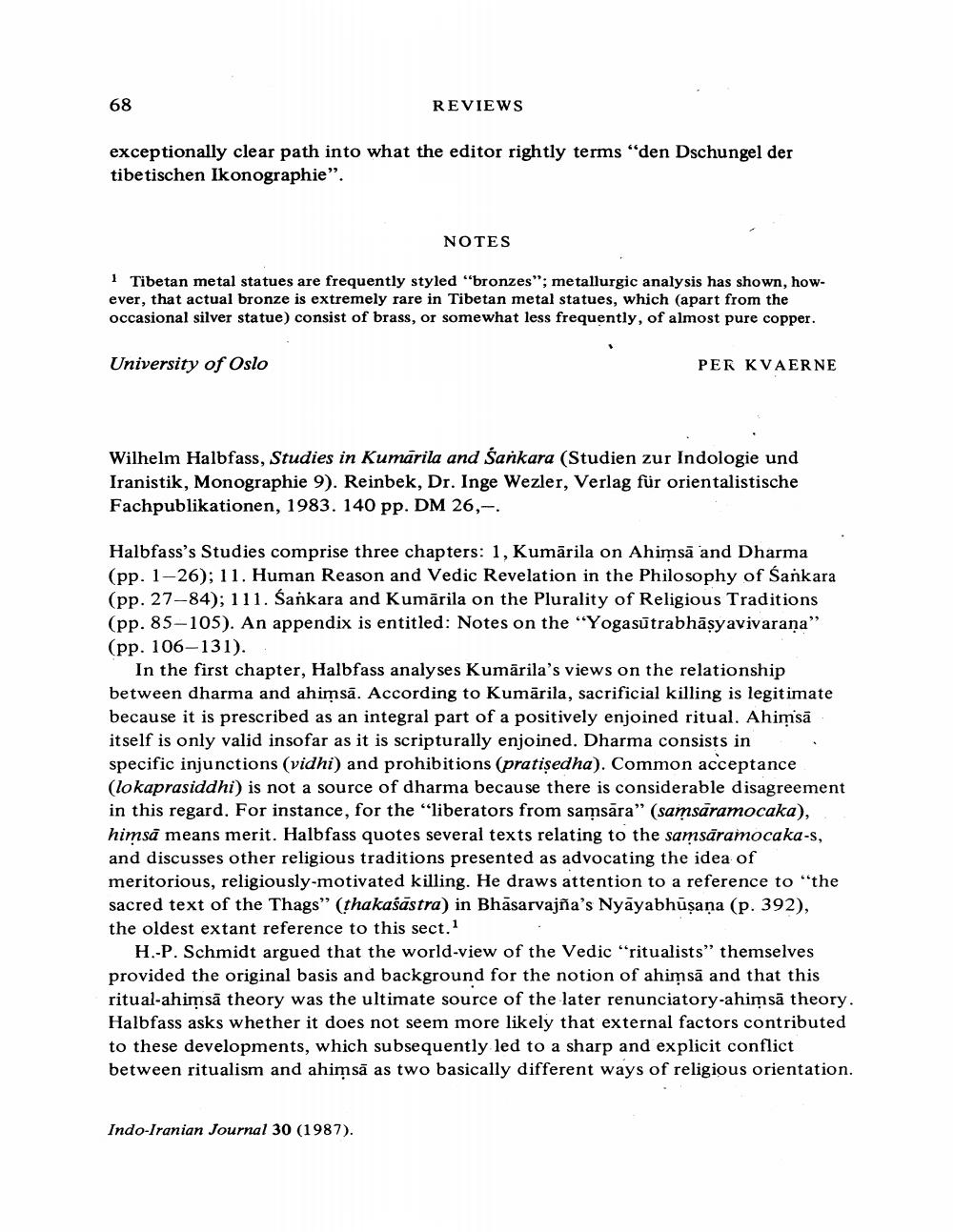Book Title: Book Reviews Author(s): J W De Jong Publisher: J W De Jong View full book textPage 2
________________ 68 REVIEWS exceptionally clear path into what the editor rightly terms "den Dschungel der tibetischen Ikonographie". NOTES 1 Tibetan metal statues are frequently styled "bronzes"; metallurgic analysis has shown, however, that actual bronze is extremely rare in Tibetan metal statues, which (apart from the occasional silver statue) consist of brass, or somewhat less frequently, of almost pure copper. University of Oslo PER KVAERNE Wilhelm Halbfass, Studies in Kumarila and Sankara (Studien zur Indologie und Iranistik, Monographie 9). Reinbek, Dr. Inge Wezler, Verlag für orientalistische Fachpublikationen, 1983. 140 pp. DM 26,-. Halbfass's Studies comprise three chapters: 1, Kumārila on Ahimsa and Dharma (pp. 1-26); 11. Human Reason and Vedic Revelation in the Philosophy of Sankara (pp. 27-84); 111. Sankara and Kumārila on the Plurality of Religious Traditions (pp. 85-105). An appendix is entitled: Notes on the "Yogasūtrabhāsyavivarana" (pp. 106-131). In the first chapter, Halbfass analyses Kumārila's views on the relationship between dharma and ahimsā. According to Kumārila, sacrificial killing is legitimate because it is prescribed as an integral part of a positively enjoined ritual. Ahimsā itself is only valid insofar as it is scripturally enjoined. Dharma consists in specific injunctions (vidhi) and prohibitions (pratişedha). Common acceptance (lokaprasiddhi) is not a source of dharma because there is considerable disagreement in this regard. For instance, for the "liberators from samsāra" (samsāramocaka), himsă means merit. Halbfass quotes several texts relating to the samsāramocaka-s, and discusses other religious traditions presented as advocating the idea of meritorious, religiously-motivated killing. He draws attention to a reference to the sacred text of the Thags" (thakaśāstra) in Bhāsarvajña's Nyāyabhūşaņa (p. 392), the oldest extant reference to this sect. 1 H.-P. Schmidt argued that the world-view of the Vedic "ritualists" themselves provided the original basis and background for the notion of ahimsā and that this ritual-ahimsā theory was the ultimate source of the later renunciatory-ahimsā theory. Halbfass asks whether it does not seem more likely that external factors contributed to these developments, which subsequently led to a sharp and explicit conflict between ritualism and ahimsā as two basically different ways of religious orientation. Indo-Iranian Journal 30 (1987).Page Navigation
1 2 3 4 5 6 7 8 9 10 11 12 13 14 15 16 17 18 19 20 21 22 ... 48
